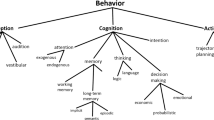Abstract
The Britten–Davidson model of genetic regulation was well received by American molecular biologists and embryologists, but not by the members of the French School of molecular biology. In particular, François Jacob considered it too abstract and too removed from experiments. I re-examine the contrast between the Britten–Davidson model and the operon model by Jacob and Monod, the different scientific contexts in which they were produced and the different roles they played. I also describe my recent encounters with Eric Davidson, and how I discovered the extraordinary continuity of his work on the development of the sea urchin, as well as his rich personality.
Similar content being viewed by others
References
Keller, E. F. (2002). Making sense of life: Explaining biological development with models, metaphors, and machines. Cambridge, MA: Harvard University Press.
Morange, M. (2009). A third pillar for molecular biology: Molecular embryology. Journal of Biosciences, 34, 17–20.
Author information
Authors and Affiliations
Corresponding author
Rights and permissions
About this article
Cite this article
Morange, M. Homage to Eric Davidson. HPLS 39, 30 (2017). https://doi.org/10.1007/s40656-017-0157-y
Published:
DOI: https://doi.org/10.1007/s40656-017-0157-y




